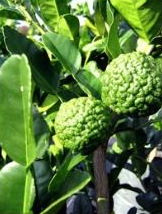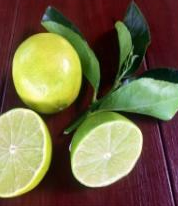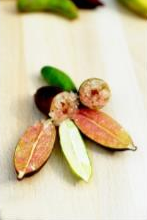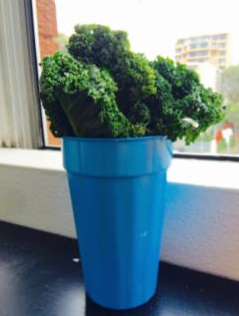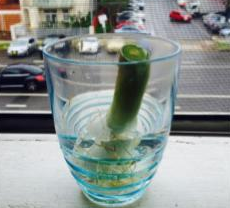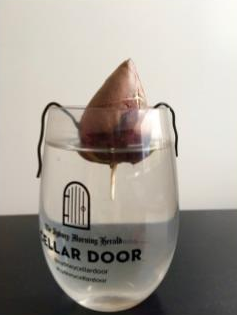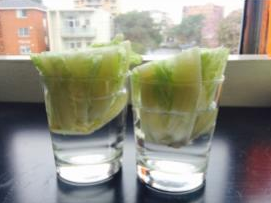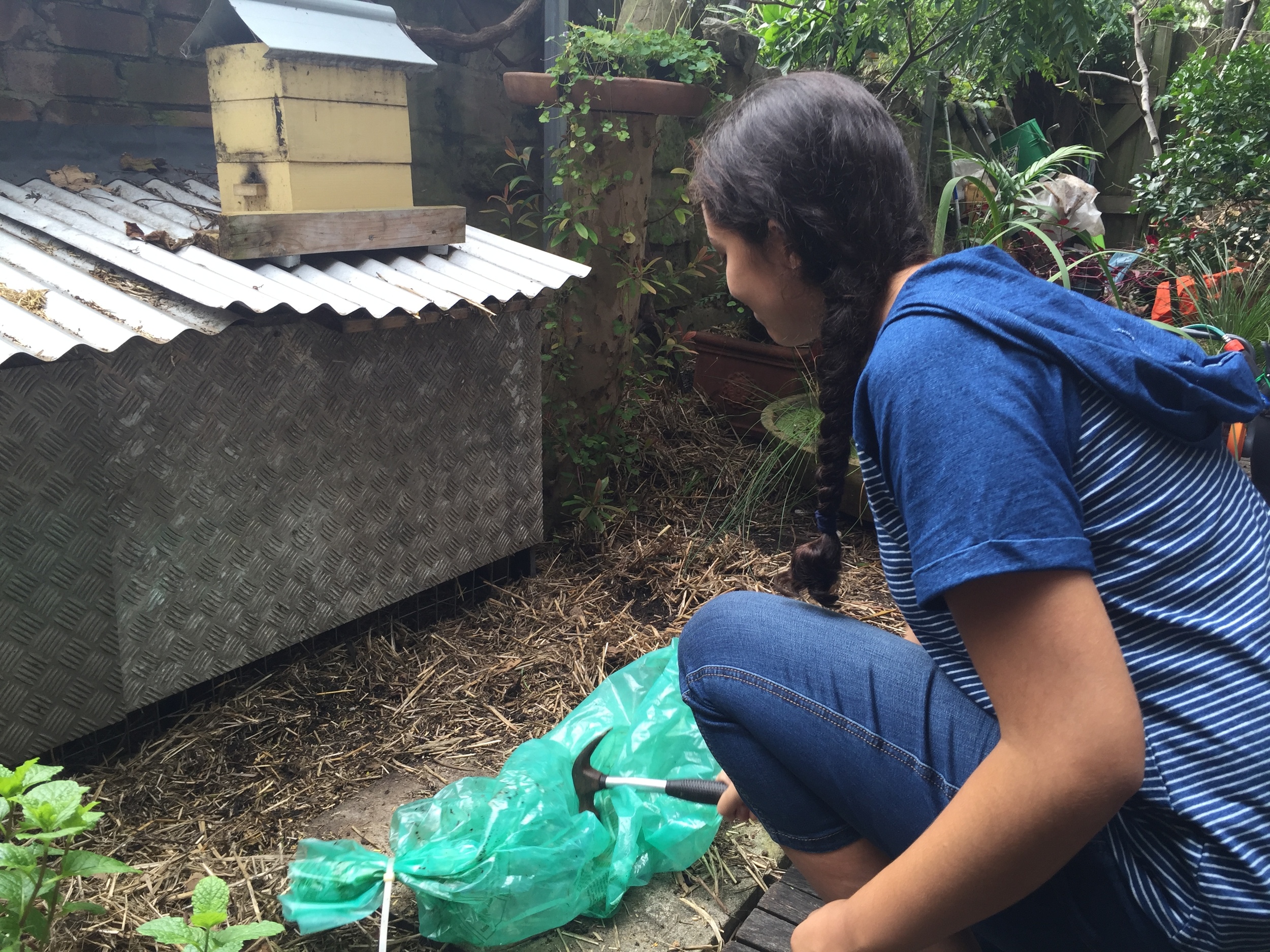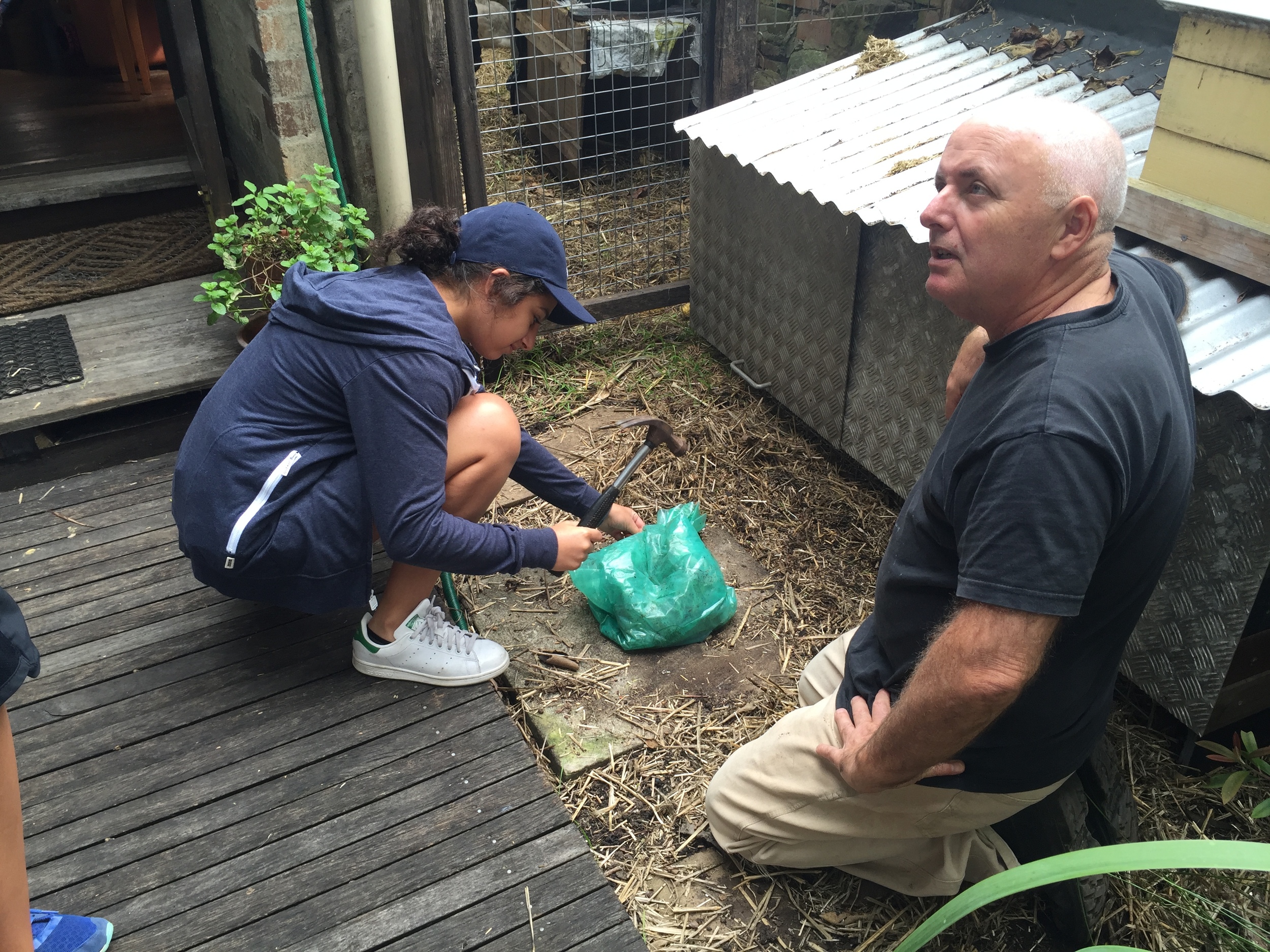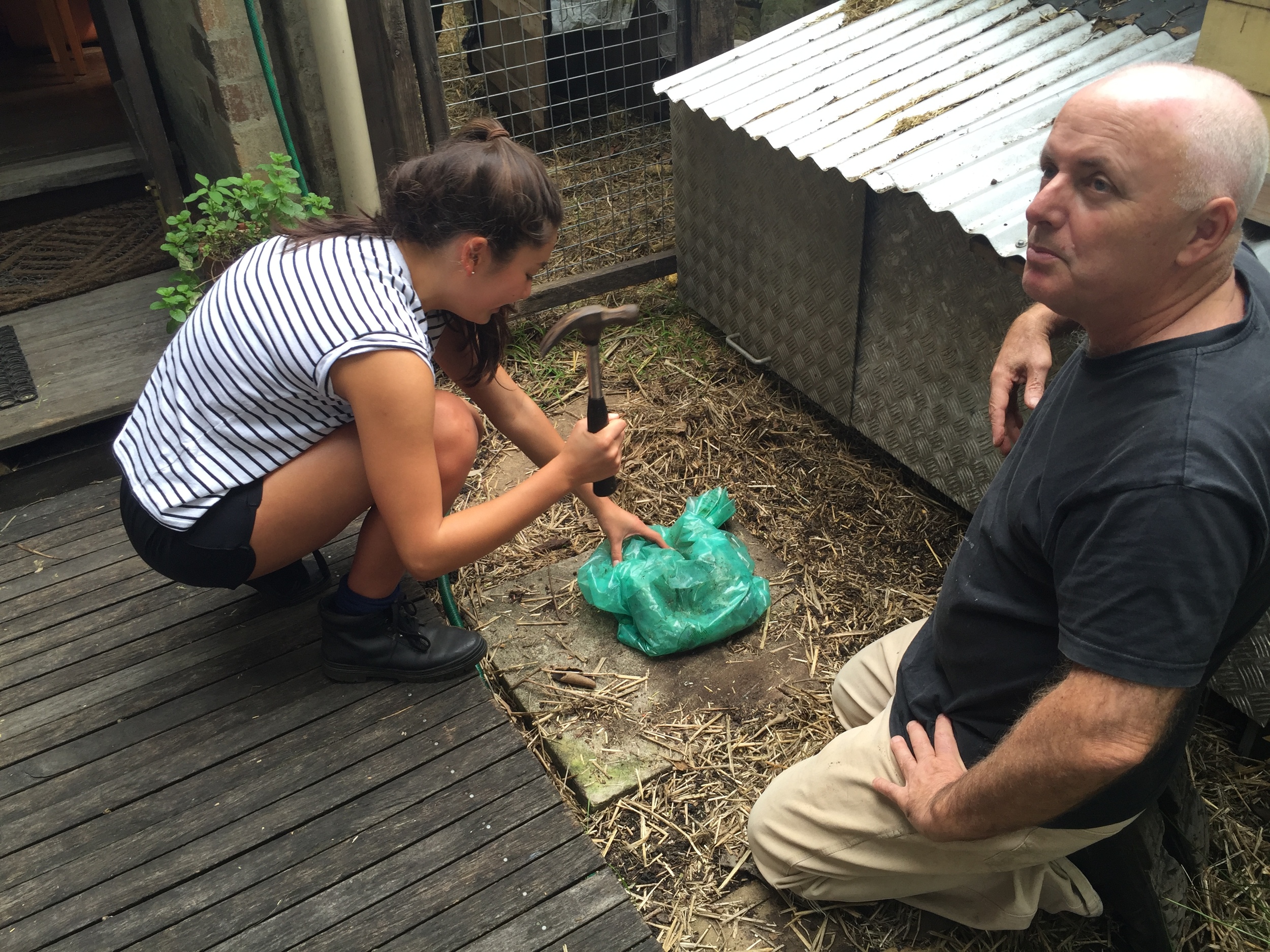Filtering by Author: Andrew Jacobs
More money & love for Chippendale road gardens
• New wheelbarrow for anyone to use
Money raised from entry fees to Sydney’s Sustainable House (http://www.sustainablehouse.com.au/) on the Australia-wide national Sustainable House Day (https://sustainablehouseday.com/) on 17 September 2017 has contributed to new investments in our Chippendale road gardens.
We have a new wheelbarrow, hose reel, plants, mulch and other investments to share and enjoy in our Chippendale road gardens.
• Chilli plants purchased from entry fees & planted by volunteers on national Australia Sustainable House day, 17 September 2017 – ready for picking now by anyone, corner Pine & Myrtle
Entry fees contributed $520 all of which went into the new equipment and plants.
In anticipation of funds being raised from the event, Michael Mobbs took a punt and purchased plants and equipment in advance for planting on the day so that volunteers could share some gardening fun, too, the total cost of which was $563.
And so it goes; got to love our gardens.
Community Planting Event at Myrtle St, Chippendale
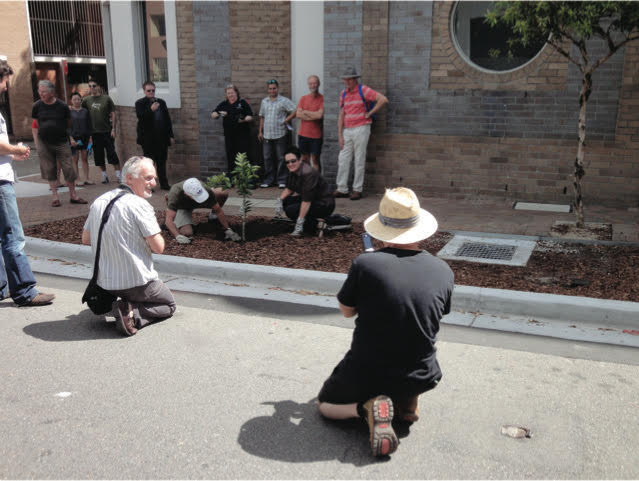
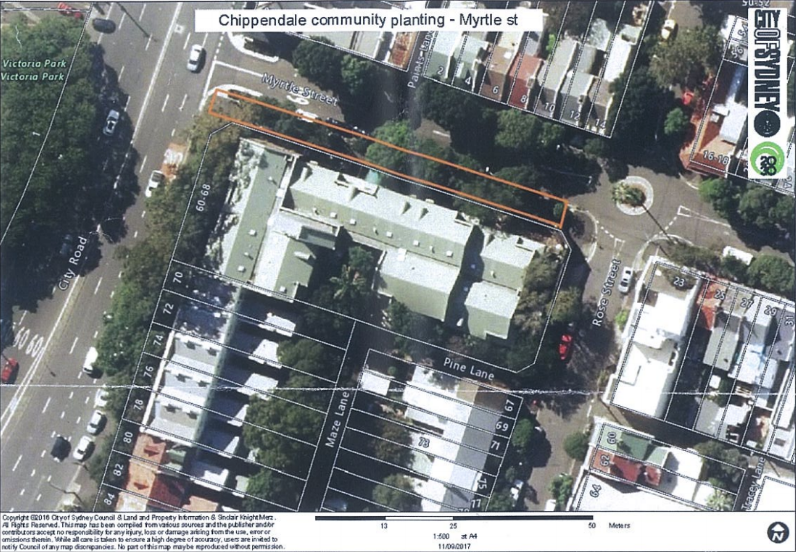
The City of Sydney invites you to a community planting event at Myrtle St nature strip in Chippendale.
When: Saturday 7 October 8am to 1pm.
Where: Myrtle St, Chippendale
What to bring: Sturdy covered shoes, hat, sunscreen and gardening gloves.
The ground will be prepared prior to planting and the council will be working with local residents and the Sustainable Chippendale group to replant bush tucker plants, native shrubs and grasses.
The footpath plants will include:
- Mint bush
- Lily turf grass
- Mat rush grass
- Rosemary
- Grevillea
- Banksia
These plants will green the street, provide edible plants and as well as encouraging more native bees in the inner city.
The city staff will be on site to provide planting demonstration and safety talk. We look forward to seeing you there.
Joel Johnson
City of Sydney
Sustainable House Day Tours - Sep 17
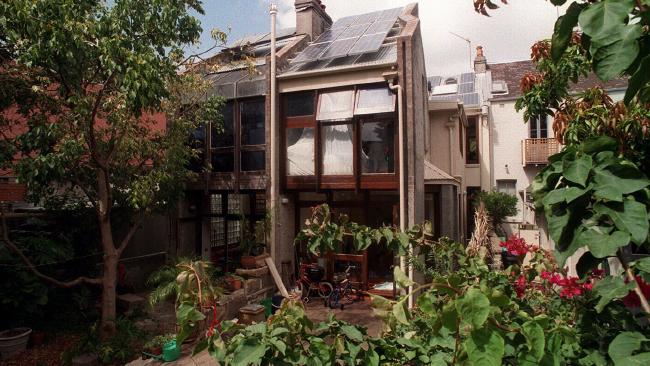
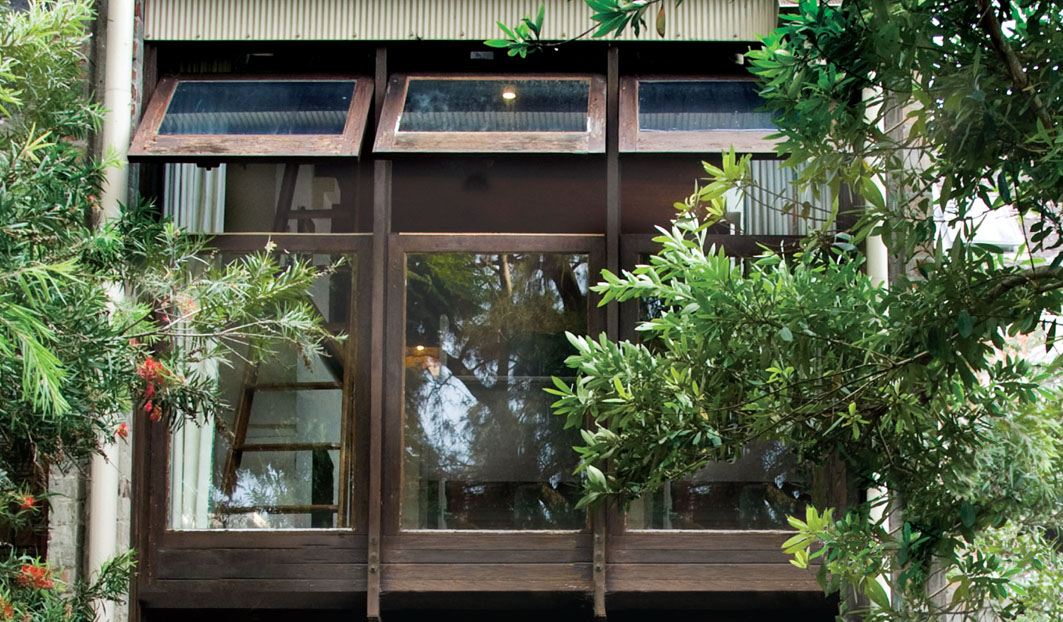

Curious about how one can live off-grid int the middle of a bustling city? Come join us on Sunday September 17 when Sydney’s very own Sustainable house, one of over 200 sustainable houses across Australia, is open for tours in celebration of Sustainable House day.
Tours are $25 fee per person on the day. Money raised will be donated to Chippendale road gardens projects. The funds will be used to buy: rotating compost bins, fruit trees, plants, gloves, mulch, and such. To enrich our lovely and much-admired road gardens. When these are bought we can have a community planting day and anyone may choose what’s been bought to plant at their place.
- What: Tours of Michels Mobbs Sustainable House in Chippendale
- When: Sunday 17 September; 10 to 4 pm. Tours on the hour. (Maximum 25 people per tour)
- Where: 58 Myrtle St, Chippendale NSW 2008, Australia
- Cost: $25 with 100% of funds going to Chippendale road gardens project.
- Booking: Just turn up on the day, no booking required.
- Learn more:
One FREE place in Michael Mobbs' Low Bills Living Course up for grabs!
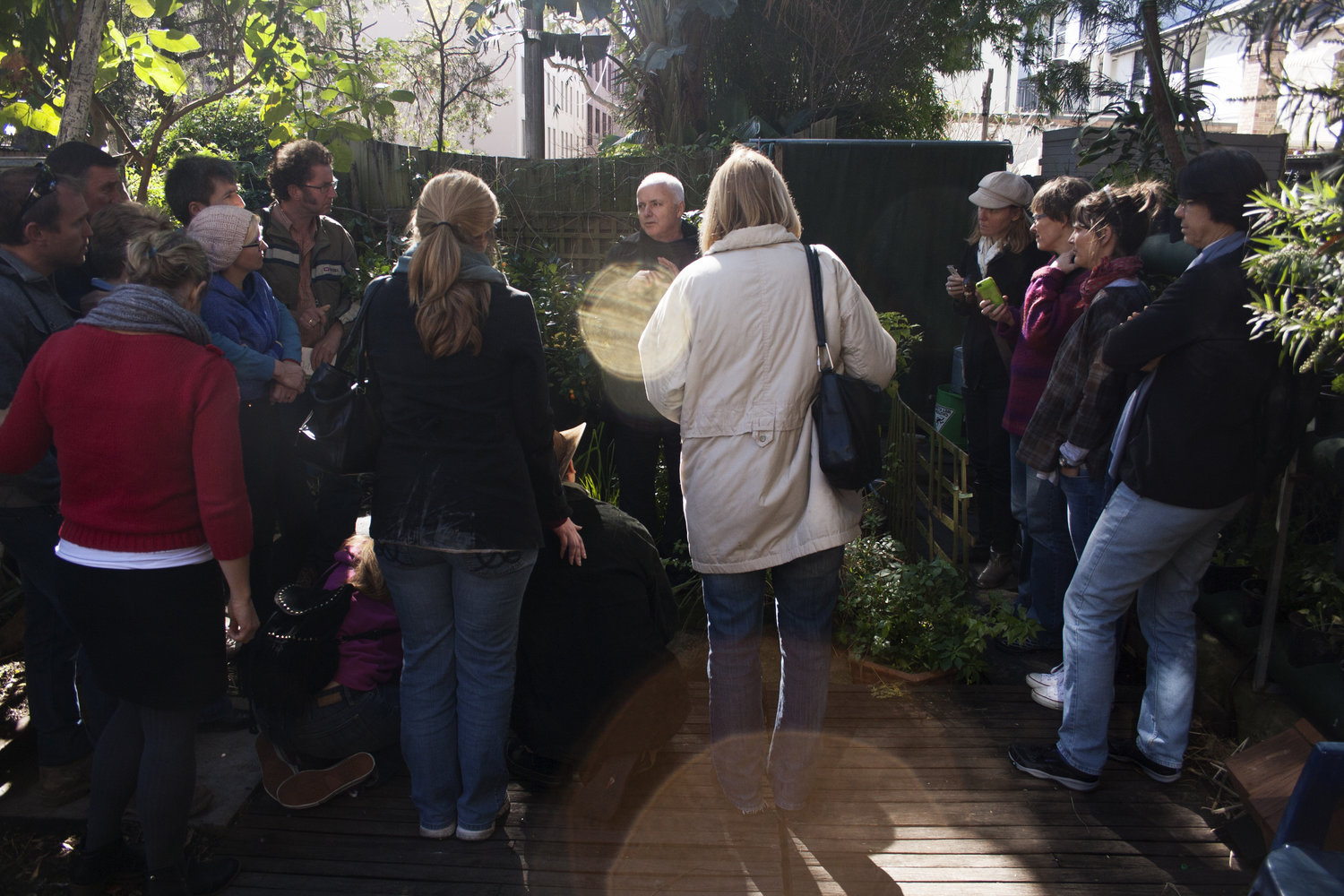




Local sustainable expert Michael Mobbs' is generously offering one free scholarship for a Chippendale resident to the July / August 2017 course.
The Chippendale resident may join the course without fees (a saving of $990) being delivered in Michael's Chippendale house over four days starting 22 July, finishing 6 August.
Details of the presenters and the course, which is over two weekends and is for a maximum of 9 people, can be found here:
To obtain the scholarship please email Michael after visiting his website: www.sustainablehouse.com.au and let him know:
- Why you wish to do the course and what actions and ideas you would like to achieve for yourself and Chippendale.
Each submission will receive a reply and an opportunity to discuss whether the course is a good fit for you and your plans.
"It would be terrific to have a local who is passionate, engaged in our lovely Earth and wishing to take some actions to have a low bills life."
Michael Mobbs, Chippendale www.sustainablehouse.com.au
Late weekly report!
This was a WEEKLY REPORT, written by the lovely Jessica Tang on the 29/08/16, and somehow we missed publishing it! But better late than never, as this is all still very interesting and relevant!
A Chinese proverb says ‘spring is sooner recognised by plants than by men.’ Although the chill of winter lingers in air during August, those tiny pink pulps of finger limes remind us that springs is coming. The finger lime Citrus australasica is the most well-known Australian native citrus. They are hardy and thorny, producing distinctive finger shaped fruit with small bead-like crystal pulps. Although those bright pink pulps look like flower buds, the finger lime actually blooms in late summer and autumn with white or pale pink, and fruits ripen through winter to spring. The fruit of finger lime is popular among top restaurants around the world, and it can be used in drinks, desserts, jams and as a garnish.
There are two other popular citrus trees in our community garden, Tahitian lime Citrus aurantifolia and Kaffir lime Citrus hystrix. They both have edible fruits or leaves. Unlike finger lime, Tahitian lime is thornless, the fruits are round-shaped, lemon-yellow with smooth thin skin. Kaffir Lime is native to Indonesia but wildly grown worldwide as a shrub for its aromatic leaves used in Thai cuisines. Kaffir lime is the shortest one among other citrus, which only reach 1.5m in height. They are easy to be recognized by their unusual double lobed leaves and knobby fruits with little flesh.
Remove the weeds
This week we also cleaned the weeds in some pots and planted with vegetable seeds. Here I would like to share some tips on sowing the seeds.
Dry seeds
* Read the instructions. It is important to choose the right seeds in the suitable region and season. We decided to sow some peas at the end of August. Cooler seasons in the subtropics are the ideal time for growing peas. Luckily they are easy to grow, fast germinate in 7 to 10 days and they are productive.
* Removed all the weeds and roots, and mix the soil. Gently pull the weeds out and carefully remove their roots in soil. In fact, the best time to hand-pull weeds is after a drenching rains, or pre-sprouting the soil before removing the weeds. Weeds are valuable too. Some of the weeds are edible and may have medication values. Common edible weeds include: chickweeds (Stellaria media), Dandelion (Taraxacum officinale), Wood sorrel (Oxalis), Nettle (Urtica urens). Weeds can be added to composts if the seed heads of weeds haven’t formed.
* Prepare a wick for pot plant with dark cloth. When placing the plot on vertical garden, the wick can water the plants from below and draw up the moisture through the soil.
Wicks made of shade cloth
* Fill the clean pots and press down the soil, sow the seeds and light covered it with soil. Cover the soil with mulches which help to keep the soil moisturized and warm. Some peas need beside trellis to support and direct the way they grow.
* Keep the soil moist but not too wet, and make sure they get enough sun. Our vertical garden faces north and south, which is a good position for plants to receive sun light.
Jessica with Miss Chook
Grow Your Own Food in Water from Kitchen Scraps
By Jessica Tang
Sustainable Chippendale Community Garden
A video on Facebook inspired me to grow the leftover fruit and leafy green vegetables in water bottles. I have tried lettuce, kales, chives and avocado nut. The instruction is very simple, and you will see the result in few days!
You will need your plants, water, a knife, some plastic or glass bottles. The fruit seed such as avocado nut will need some upholder, for example, toothpicks or wires.
See video for growing lettuce here.
Lettuce that forms round or cone shape can easily regrow from its base. You will need to cut of the lettuce leaves and leave an inch-or-to stem, placing the head of lettuce in an inch of fresh water. Make sure the water covers the whole base and put it in the sunny window. Replace the water every few days.
Students go road gardening
We have had the pleasure to have Kathrin, Bianca and Christina back helping take care of our gardens for their Duke of Edinburgh's award and here is what they had to say about their experience:
"Our findings at the Chippendale Sustainable Garden
30/4/16
By Kathrin Germanos, Bianca Bader and Christina Gadalla
As part of our Duke of Ed requirement for service to the community we once again partook in volunteering at the Chippendale Gardens. The main thing which we got out of today is “ not to waste” and how we are easily able to minimise our waste as things which we often don’t realise, can actually be re used in new and different ways. In addition, we also learnt how to prune, and the importance of mulch especially during Autumn.
The session started off with us trying some mung beans, which we then learnt how to grow from seeds. This was particularly interesting as during the colder months it is harder for plants to grow and thus harder to grow food. The mung bean however is one which we learn could be grown by ourselves to produce food. Furthermore, it is also rich in vitamins and versatile thus can be added to provide extra health benefits to a range of means. Michael’s suggestion being a vegetable slice or salad.
Next, we discovered another use of oyster shells, which can be added to compost tea, too improve the quality of the compost. We smashed them up using hammers then added them to the tea and went to pour this onto the garden. This tea is made up of a specific plant and then is left to ferment for a couple of days until it becomes aerobic and is rich is nitrogen ( vital for plant survival). This mixture although was quite stinky, was going to help the plants root systems grow during these months. Especially the root system since above ground level doesn’t usually grow so well during this time.
The fertiliser was then covered in mulch which was raked up straight from the chicken coop. A mixture of chicken excrement, wormsand straw Michael described it as “gold”. This was then placed once again where we had just put the fertiliser. Around the plants – the main area where the roots extend too.
As for skills, we learnt how to use secateurs safely as this is a vital tool used for pruning. Pruning must be done to help the plants healthy as it opens up the plants and allows for more sunlight and air to pass through the middle of the plant. It also helps to reduce sickness and competition on branches as then the plant doesn’t have to supply nutrients to both branches- as consequently both will become weaker. It is much better to cut off the weaker one so the stronger one can become stronger. This overall increases the plants fruit production as well as survival rate.
We were able to take turns pruning a couple of plants, which we then covered in straw ( at the base of the plant ). This helps it during Autumn and Winter as it gets colder and it acts as a sort of blanket for the plants.
Overall we had a very valuable educational experience, which although at some stages may have been a little challenging, was eye opening. We learnt that even the smallest things can make a difference and that most ordinary things can be saved as re used to stop them from going to landfill. We were able to use these new found skills throughout the day and hopefully are able to harness them for better use in the future. "
Organic Art 'Second Life' By Ratih Luhur
The installation 'Second Life' is created to reflect the following characteristics of Myrtle St & Sustainable Chippendale:
1. Sustainability - created with organic and recycled materials collected from the streets
2. Our street as our living room - creation of a living room scene on the street
3. Edible / vegetable garden - planted with exotic microgreens, specially selected for variety of organic colours and textures. Rocket emeralds on the chair, amaranth red garnets on the hessian shawl, mung bean and peas in the planter basket
4. Multicultural heritage of the local residents- featuring a photo of Tayrona Park, Colombia by Maria Prada resident of 8 Myrtle St.
The installation is part of my entry requirement to Master of Fine Arts degree in Public Art and New Artistic Strategies at the Bauhaus University of Weimar, Germany http://www.uni-weimar.de/en/university/start/
Internationally, the Bauhaus is known as one of the most influential currents in modernism with a profound influence in art, architecture, graphic design, interior design, industrial design, and typography.
Artist CV
Ratih Luhur graduated as BSc (Arch) from the University of Sydney in 1990. She completed Master of Visual Arts (Multi Media) with honours from Sydney College of the Arts in 2000 achieving High Distinction in all subjects. Ratih's design and artistic flare was awarded 2 of the 9 awards in William Van Alen Memorial Prize international competition by NIAE New York. Internationally, Ratih is also known as a spiritual healing practitioner and mentor. http://www.ratihluhur.com
Her work reflects her refined artistic style with sensitive spiritual and cultural awareness.
Ratih's organic Art

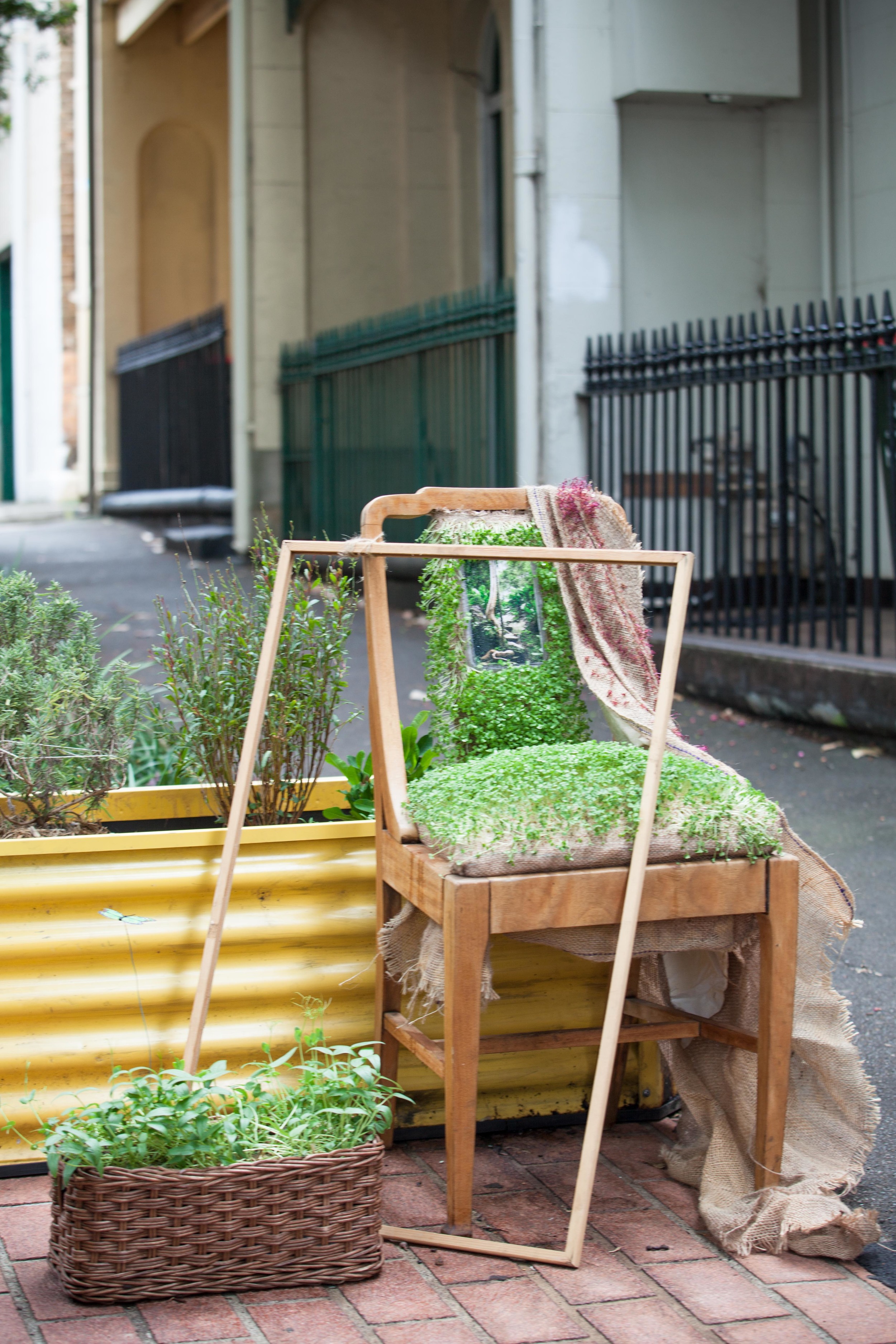


Second Life
The installation is created to reflect the following characteristics of Myrtle St & Sustainable Chippendale:
1. Sustainability - created with organic and recycled materials collected from the streets
2. Our street as our living room - creation of a living room scene on the street
3. Edible / vegetable garden - planted with exotic microgreens, specially selected for variety of organic colours and textures. Rocket emeralds on the chair, amaranth red garnets on the hessian shawl, mung bean and peas in the planter basket
4. Multicultural heritage of the local residents- featuring a photo of Tayrona Park, Colombia by Maria Prada resident of 8 Myrtle St.
The installation is part of my entry requirement to Master of Fine Arts degree in Public Art and New Artistic Strategies at the Bauhaus University of Weimar, Germany http://www.uni-weimar.de/en/university/start/
Internationally, the Bauhaus is known as one of the most influential currents in modernism with a profound influence in art, architecture, graphic design, interior design, industrial design, and typography.
Artist CV
Ratih Luhur graduated as BSc (Arch) from the University of Sydney in 1990. She completed Master of Visual Arts (Multi Media) with honours from Sydney College of the Arts in 2000 achieving High Distinction in all subjects. Ratih's design and artistic flare was awarded 2 of the 9 awards in William Van Alen Memorial Prize international competition by NIAE New York. Internationally, Ratih is also known as a spiritual healing practitioner and mentor. http://www.ratihluhur.com
Her work reflects her refined artistic style with sensitive spiritual and cultural awareness.
Some great pics from Maria @ www.mariapradaphotography.com of Ratih's organic Art in front of her house. Big thanks Ratih for making the street even more lovely.



